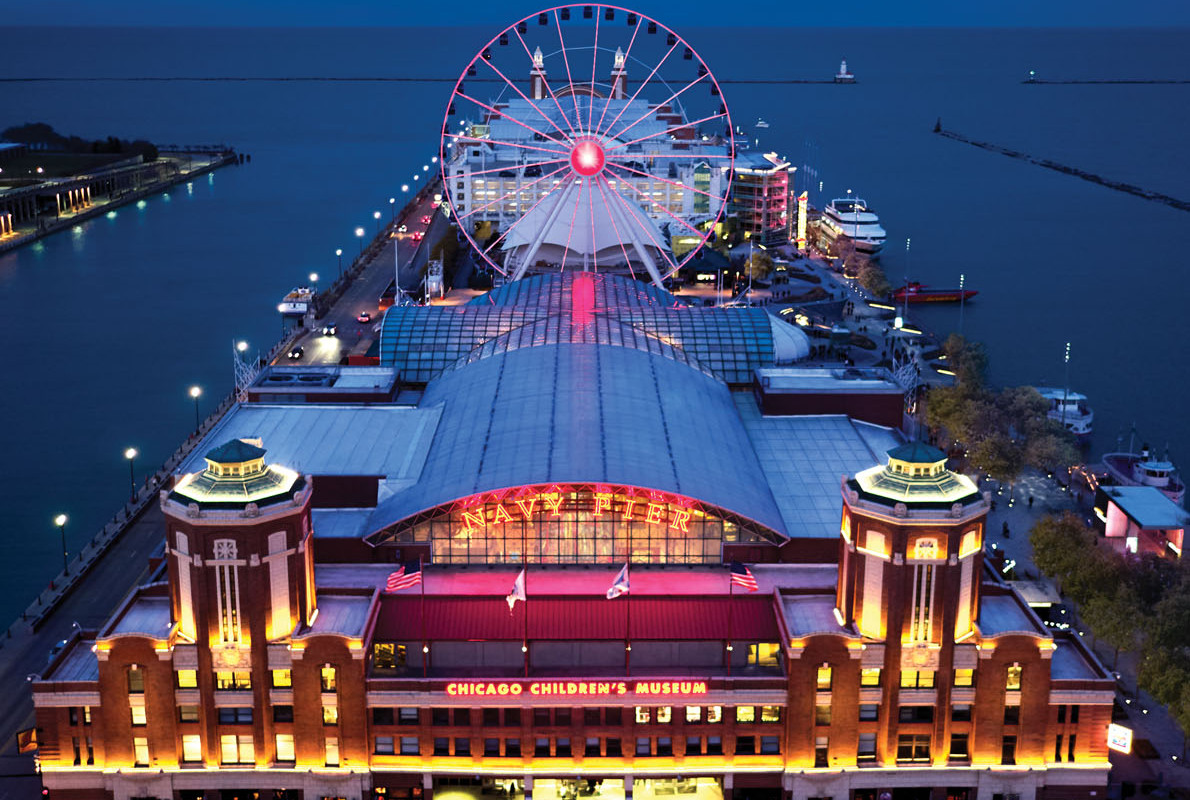 Navy Pier, previously known as the Municipal pier, opened in 1916. Its purpose was to be a place for leisure for the public as well as a shipping hub for cargo and passenger ships. Less than a year later, the U.S. declared war on Germany, and the pier adapted to an important role in military preparations. In WWII, it became a naval base.
Navy Pier, previously known as the Municipal pier, opened in 1916. Its purpose was to be a place for leisure for the public as well as a shipping hub for cargo and passenger ships. Less than a year later, the U.S. declared war on Germany, and the pier adapted to an important role in military preparations. In WWII, it became a naval base.
The University of Illinois satellite campus was created on the pier as a result of the GI bill, a bill that provided benefits to soldiers returning from war. From 1946 to 1965, an estimated 100,000 students took classes there. Once the campus moved off the pier, the pier was unused until 1976 when America’s Biennial was celebrated there. The grand ballroom was reconstructed, and the pier became a Chicago Landmark in 1977. Chicagofest, an annual music festival was created, and it took place on the pier. This festival made the pier more of an attraction until the festival ended in 1983.
In 1995, Navy pier went under a major reconstruction. There were many places added including the Children’s Museum and the Ferris Wheel. This has made the pier a major entertainment venue in Chicago. In 2016, a redesign was created by James Corner Field Operations that added a grand staircase leading up to the Centennial wheel.
The newest addition to the pier is the yard at Shakespeare Theater. The yard can hold an audience ranging from 150-850 people. The yard has nine mobile audience towers that can be arranged in different ways surrounding the stage.
Navy Pier has been a staple in Chicago for more than a century and remains a tourist attraction as it continues to grow. Its adaptability throughout different times has made it an important part of history.



